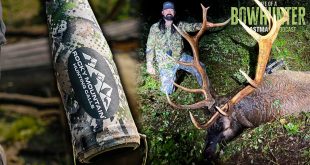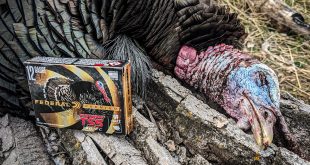Chasing The Slam! Turkey Subspecies: Who, What, Where!
By Todd Helms
So most folks know that there are five subspecies of turkeys in North America and that a Turkey Slam means collecting each of them. But what a lot of people don’t realize is where they need to go to find each subspecies and how each particular bird got its name. So I thought a little article breaking it all down might be helpful and maybe enlightening. For an incredibly informative read on the history of the Wild Turkey check out this link from The National Wild Turkey Federation
The Eastern Turkey (M. g. silvestris) – Named by L.J.P Vieillot in 1817 with the handle “silvestris” that means “forest” turkey. The bird inhabits basically the entire eastern half of the United States but does push West of the Mississippi River in the States of Minnesota, North Dakota, South Dakota, Iowa, Missouri, Arkansas, Louisiana, Texas, Oklahoma, Kansas and Nebraska with few pockets of birds elsewhere too. The Eastern Turkey is the largest and most populous of the 5 subspecies and is known for thunderous gobbles and aggressive behavior during breeding season, these big birds can be a riot to watch pummel a Jake decoy or reap with a strutter decoy.
If you’re looking to take your first Eastern Turkey the midwestern states are great options along with more traditional Eastern Turkey strongholds like Tennessee, Kentucky, West Virginia and Pennsylvania.
The Osceola Turkey or Florida Turkey (M. g. osceola) – Named after the Seminole chief Osceola who stood resolute in the swamps of Florida until 1835, you’ll have to hunt the southern half of Florida if you want one, the northern half is populated by Easterns. By far the smallest population and the hardest bird to take, consider a good outfitter to get you your best shot at one of these swamp gobblers, oh and bring snake boots! This is a great option to kick off your spring turkey hunts as the season begins in March.
The Merriam’s Turkey (M. g. merriami) – Named by Dr. E.W. Nelson, in 1900 this bird carries the name of the first chief of the U.S. Biological Survey, C. Hart Merriam. The Merriam’s, as most folks call him, is a beautiful turkey, the most striking of the five in my opinion, and is a prolific gobbler but tends to be shy of confrontation after the spring breakup and during the peak of the breeding season. Full strut and Jake decoys work well early in the season when gobblers are hashing out pecking orders but later on a single hen is most likely your best bet for decoys. These birds are difficult but not impossible to over call.
They are found in their largest concentrations in the Northern Rocky Mountains, the Black Hills of South Dakota and Wyoming and in Montana’s Missouri River Breaks. Nebraska lays claim to a healthy population as well and after you harvest your Merriam’s you can head east and look for an Eastern bird as well. The same can be done in South Dakota.
The Rio Grande Turkey (M. g. intermedia) – In 1879, George B. Sennett described the Rio as somewhere between an Eastern and a Merriam’s and thus the name intermedia or intermediate. Populating the southern plains states of Oklahoma and Texas predominantly, Rio’s carry a blend of the Eastern and Merriam’s coloration with the feathers of the cape and fan being tipped in a creamy tan color instead of white like the Merriam’s. They tend to be larger in body than a Merriam’s, being closer to an Eastern bird but they gobble and prefer to roost in large flocks similar to a Merriam’s. Gregarious, they are hard to over call and best of all tend to be aggressive like an Eastern bird, charging strutter and Jake decoys with abandon. Public land opportunities do exist for these birds but private land access is the most reliable way to take your gobbler.
The Gould’s Turkey (M. g. mexicana) – In the running for the least populous of the subspecies the Gould’s turkey gets its name from J. Gould who first described it in 1856. Its range is very limited in the southwestern U.S. being found only in parts of southern Arizona and New Mexico. However, south of the border the bird thrives and is most likely the turkey introduced to Europe by the Spanish in the 16th century. Gould’s tend to behave similarly to Merriam’s birds. There is limited hunting opportunity in AZ and NM with DIY public land options doable, just be prepared to work for it spending long days and covering lots of country to get on birds. Hiring an outfitter narrows the playing field considerably and may be worth it if you’re pressed for time.
Well, there ya go. I hope this was as much fun and as interesting to read as it was to put together. I don’t know about you but it makes me want to go chase down a Turkey Slam even worse now.
 Eastmans' Official Blog | Mule Deer, Antelope, Elk Hunting and Bowhunting Magazine | Eastmans' Hunting Journals
Eastmans' Official Blog | Mule Deer, Antelope, Elk Hunting and Bowhunting Magazine | Eastmans' Hunting Journals




